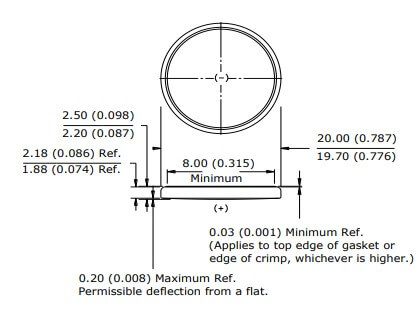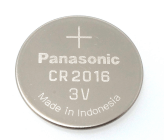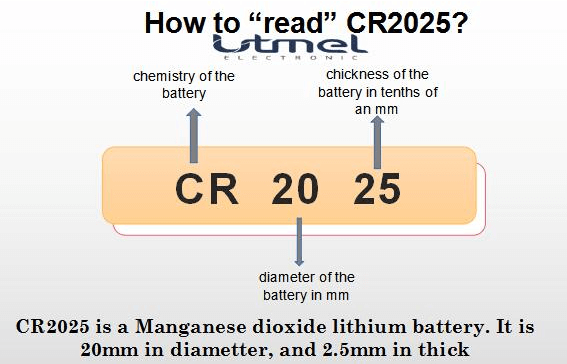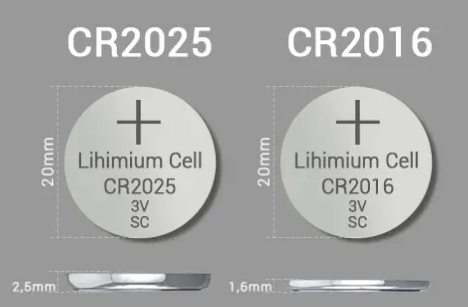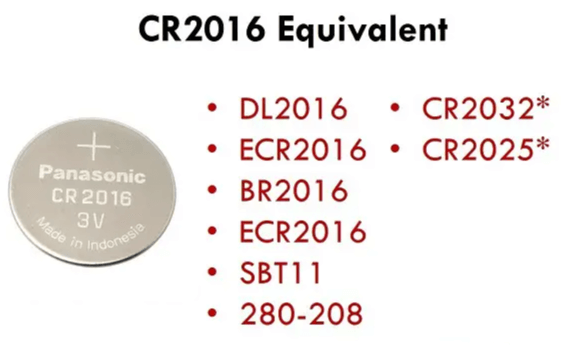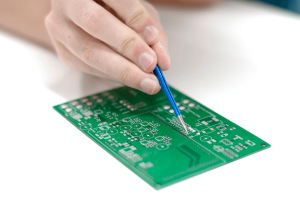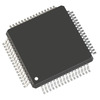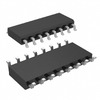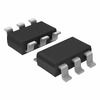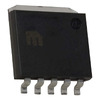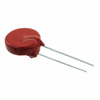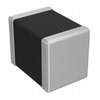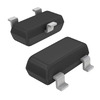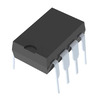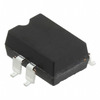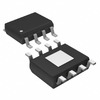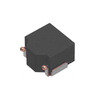on April 11th
880
CR2025 VS CR2016: Which One Could Be Your First Choice?
In the realm of modern electronics, the quest for compact, efficient power sources is ever-present. Among the myriad options available, the CR2025 and CR2016 lithium button batteries emerge as pivotal components in powering a wide array of small, portable devices. This article delves into the intricacies of these seemingly minute yet significantly impactful batteries, unraveling their characteristics, applications, and the careful considerations required for their interchangeability and safe use. By examining the dimensions, capacity, voltage, and specific use cases of the CR2025 and CR2016, we not only understand their technical differences but also appreciate their roles in enhancing the functionality and reliability of electronic devices. From powering the delicate hands of a wristwatch to ensuring the accuracy of a blood glucose monitor, these batteries are at the heart of many critical and everyday technologies.
Catalog
Figure 1: CR2025&CR2016
The CR2025 battery, a small but mighty power source, measures 20mm in diameter and 2.5mm in thickness. This button-type lithium battery is favored by makers of small, portable electronic devices due to its high energy density and consistent voltage output. The design of the CR2025 makes it perfectly suited for devices that require a compact power solution. Items such as car key fobs, calculators, miniature toys, digital thermometers, and certain types of watches all rely on this battery. The CR2025 is capable of providing long-lasting, reliable energy, ensuring that devices continue to operate even when it's inconvenient to replace the battery.
Figure 2: CR2025 Battery
The CR2025 battery packs a lot of power into a tiny frame. At just 20mm across and 2.5mm thick, this lithium battery fits into many small devices we use every day. Its high energy density means it can store a lot of power, so your gadgets work longer without needing a new battery. This battery is also reliable, giving a steady voltage that keeps devices running smoothly.
Figure 3: Dimensions of CR2025 Battery
|
Chemistry
|
Lithium Manganese Dioxide
|
Lithium Carbon Monofluoride
|
Lithium-Ion
|
|
Type
|
Non-Rechargeable
|
Non-Rechargeable
|
Rechargeable
|
|
Nominal Voltage
|
3.0 V
|
2.8 V
|
3.6 V
|
|
Cut-Off Voltage
|
2.0 V
|
2.25 V
|
2.6 V
|
|
Typical Capacity
|
160-170 mAh
|
130-150 mAh
|
30-40 mAh
|
|
Typical Labels
|
CR2025, R2025, DL2025,
E-CR2025, SB-T14, 5003LC
|
BR2025
|
LiR2025, LIR2025, LR2025
|
Chart 1: CR2025 Battery Specifications and Comparison with Other Types of Batteries
People who make gadgets like car key fobs, calculators, and digital watches prefer the CR2025. Its small size and consistent power make it ideal for these items. They need a battery that won't quit unexpectedly, and the CR2025 delivers. Whether you're calculating something important, playing with a small toy, or checking the time, this battery ensures your device is ready to go. Plus, its long life means you don't have to worry about replacing it often, even in items like thermometers or special watches that are used frequently.
Figure 4: CR2025 Embedded in the Watch
The CR2016 battery is notably thin, only 1.6mm, which is less bulky compared to other batteries like the CR2025. This slim profile makes it a perfect fit for sleek devices that need to remain compact. Its capacity of about 90mAh, while lower than some, is more than enough for gadgets that run on low power. High-efficiency batteries like CR2016 are great at providing continuous power output for delicate things like watches or important things like blood glucose monitors. These devices not only require power but they also need it delivered in a reliable, stable manner.
Figure 5: CR2016 Battery
Manufacturers of devices such as playful small toys that children handle daily, or essential medical monitors that track vital health information, opt for the CR2016 battery. They do so not just for their compactness, but also for its ability to maintain a consistent power supply over an extended period. This is crucial in applications like a computer's motherboard, which is seldom accessed for battery changes, and in medical devices, where a sudden loss of power could have serious consequences.
Figure 6: Dimensions of CR2016 Battery
|
Specification
|
|
Nominal Capacity
|
90 mAh
|
|
Nominal Voltage
|
3V
|
|
Weight
|
1.6g
|
|
Operating Temperature
|
-30°C - +60°C
|
Chart 2: Specification of CR2016
In essence, the CR2016 battery is tailored for scenarios where space is at a premium and power needs are modest. Its design ensures that even with limited room for a battery, the device can still perform its function reliably over time, reducing the frequency of battery replacement. This makes life easier, devices more reliable, and convenient for people whether they are on their wrists or in their pockets.
The CR2025 and CR2016 batteries share similarities that make them versatile for a wide range of small electronic devices. Their unique physical dimensions and electrochemical properties make them ideal for gadgets like watches, key fobs, and calculators. These devices benefit from the batteries' compact size and consistent voltage output, ensuring they run reliably over time. Let's dive into these similarities in detail:
Application Scenarios
Both CR2025 and CR2016 batteries are suitable for devices with limited space. Their slim profiles fit perfectly in small, precision devices. For example, when replacing the battery in a fashionable watch or a slim calculator, these batteries make the entire replacement process quick and easy due to their compactness.
Figure 7: Electronic Products that Can Use These Two Types of Batteries
Standardized Naming and Structure
The names CR2025 and CR2016 are not arbitrary, they follow a specific naming convention that indicates the batteries' dimensions. "CR" signifies lithium batteries, and the numbers detail the diameter (20mm) and thickness (2.5mm for CR2025 and 1.6mm for CR2016). This standardization aids designers in ensuring a perfect fit between the battery and the device, avoiding any guesswork when it comes to compatibility.
Figure 8: Standardized Naming of CR2025
Consistent Voltage and Chemistry
Despite their size differences, both batteries deliver a stable output of 3 volts. This consistency means they can sometimes be interchangeable, offering flexibility in various situations. They use lithium manganese chemistry, preferred in button batteries for its excellent energy density and stable discharge characteristics. This chemistry is crucial for devices that require a dependable power source over long periods, such as remote controls or health monitoring devices.
Figure 9: CR2016 Battery
In practice, inserting one of these batteries into a device involves a simple yet precise operation. For example, when you need to replace the battery in a car key fob, you locate the small compartment designed for the battery, often secured with a screw or snap mechanism. Using a small tool, you carefully open the compartment, making sure not to apply too much force. Inside, you see the battery nestled snugly, its numbers facing up. You note the battery's orientation before gently prying it out, replacing it with a new one, and ensuring the positive side is correctly aligned. This action—though quick and straightforward—requires attention to detail to maintain the device's functionality without interruption.
In essence, the CR2025 and CR2016 batteries are essential components for a wide array of electronic devices, chosen for their specific physical and electrochemical properties that align with the requirements of small, precise gadgets. Their design, naming convention, and chemical makeup ensure they meet the needs of users looking for reliable, long-lasting power solutions in compact forms.
When choosing a coin cell battery for modern portable electronics, due to its compact size and reliable power output, as well as varying voltages, considerations need to be made when choosing the right battery. The battery not only enhances the portability of the device but also ensures a stable power supply for a long time. Of the various models available, CR2025 and CR2016 batteries are two common choices, with the main differences being their thickness, capacity, temperature characteristics, and voltage, which determine their specific applications.
Figure 10: CR2025 VS CR2016
Thickness Comparison between CR2025 and CR2016 Batteries
One of the most straightforward physical differences between the CR2025 and CR2016 batteries is their thickness. The naming convention of these batteries reveals their dimensions: "CR" indicates a lithium battery, and the numbers provide size information—the first two digits represent the diameter, and the last two digits, measured in tenths of millimeters, indicate the thickness. The CR2025 is 2.5mm thick, while the CR2016 is slimmer at 1.6mm. This difference affects not just the internal design, such as the arrangement of electrolytes and electrode materials, but also impacts the battery's capacity and power output.
Figure 11: Thickness Comparison between CR2025 and CR2016 Batteries
Capacity and Voltage Comparison
Beyond thickness, a battery's capacity and voltage are also important for its suitability for various devices. Capacity relates directly to how long a device can operate before needing a battery replacement, and a stable voltage output ensures device performance remains unaffected by battery power decline. Both the CR2025 and CR2016 batteries offer a standard output of 3 volts, catering to most small electronic devices. However, their differing physical sizes and internal structures mean they have different capacities, an important factor to consider, especially for applications with specific endurance requirements.
|
|
CR2025
|
CR2016
|
|
Capacity
|
165 mAh
|
90mAh
|
|
Voltage
|
3 V
|
3 V
|
|
Rechargeable
|
Not rechargeable
|
Not rechargeable
|
|
Thickness
|
2.5 mm
|
1.6mm
|
Chart 3: Comparison of Specifications
Comparison of Application Scenarios
The physical dimensions and power output characteristics of a battery significantly influence its suitability for various devices. The CR2025, being thicker, usually has a higher capacity, making it better suited for devices that require longer battery life, such as high-performance remote controls and digital cameras. On the other hand, the thinner CR2016 fits better in more compact devices, like certain models of watches and health monitoring equipment. Therefore, manufacturers and users must select the battery model that best meets the specific needs and design constraints of their devices.
Figure 12: Duracell CR2025
In practical terms, this means that when you're faced with a device that needs a new battery, you consider not just the size of the battery compartment, but what the device is used for. For example, if you're replacing the battery in a device that you use frequently and that consumes a lot of power, like a high-end camera, you might lean towards the CR2025 for its longer life. But for a sleek, minimalist watch that prioritizes form over function, the CR2016 could be the better choice because of its slimmer profile, ensuring the watch remains elegant and unobtrusive on your wrist. This decision-making process is not just about fitting the battery into the device, but about matching the battery's capabilities with the device's needs, ensuring optimal performance and convenience.
For CR2025:
If your gadget is powered by a CR2025 battery and needs a new one, you can look into several equivalents such as the DL2025 by Duracell, ECR2025 by Energizer, and other CR2025s by brands like Kodak, Maxell, Rayovac, and Sony. These batteries share the same dimensions and electrical characteristics as the original CR2025, making them perfect substitutes. While replacing, it's crucial to handle the battery carefully, align it properly within the compartment, and make sure the positive and negative ends are correctly positioned according to the device's specifications.
Figure 13: CR2025 Equivalent Batteries
|
Model
Datasheet
|
Nominal Capacity
|
Operating Temperature/
Self-Discharge Rate
|
Discharge Current
|
|
Duracell CR2025
|
185 mAh,
15kΩ @20°C down to 2.0V
|
-20°C to +60°C
<1% per year @20°C
|
0.3 mA standard
3.0 mA max. cont.
10 mA 1s pulse
|
|
Energizer CR2025
|
170 mAh,
15kΩ @21°C down to 2.0V
|
-30°C to +60°C
~1% per year at room temperature
|
0.19 mA standard
6.8 mA 2s pulse
|
|
EEMB CR2025
|
150 mAh,
7.5kΩ load
|
-30°C to +60°C
≤3% per year
|
-
|
|
Maxell CR2025
|
170 mAh
|
-20°C to 85°C
-
|
0.2 mA standard
|
|
muRata CR2025
|
160 mAh
|
-30°C to +70°C
-
|
0.2 mA standard
|
|
GP CR2025
|
160 mAh,
15kΩ @20±2°C down to 2.0V
|
-
|
2.5 mA max. cont.
|
|
Renata CR2025
|
165 mAh
|
-30°C to +85°C
<1% per year @23°C
|
0.3 mA standard
3.0 mA max. cont.
|
|
Varta CR2025
|
165 mAh,
10kΩ @20°C down to 2.0V
|
-20°C to +70°C
<1% per year at room temp.
|
0.3 mA standard
|
|
Panasonic CR2025
|
165 mAh
|
-30°C to +85°C
-
|
0.2 mA standard
|
Chart 4:The Most Popular CR2025 Batteries and Specifications
For CR2016:
When you're looking for a replacement for your CR2016 battery, you have several options to consider. These alternatives include the BR2016, DL2016, ECR2016, KCR2016, KECR2016, KL2016, and L2016 batteries. Each of these options can effectively power your devices just like the original CR2016. When swapping out the battery, ensure the replacement you choose matches the voltage and shape of the original. This ensures your device works smoothly without any hiccups.
Figure 14: CR2016 Equivalent Batteries
|
Model
|
Capacity
|
Self-Discharge Rate
|
Drain Current
|
Operating Temperature
|
|
Duracell CR2016
|
80 mAh, down to 2.0 volts, 15kΩ, @20°C
|
<2% annually @20°C
|
0.1 mA cont.
5 mA cont. max
15 mA 1s pulse
|
-20°C to +60°C
|
|
GP Batteries CR2016
|
95 mAh, down to 2.0 volts, 30kΩ, @20±2°C
|
——
|
4.0 mA cont. max.
|
——
|
|
Maxell CR2016
|
90 mAh
|
-
|
0.1 mA cont.
|
-20°C to +85°C
|
|
Energizer CR2016
|
100 mAh, down to 2.0 volts, 30kΩ, @21°C
|
~1% annually @20°C
|
0.1 mA cont.
6.8 mA 2s pulse
|
-30°C to +60°C
|
|
Panasonic CR2016
|
90 mAh
|
——
|
0.1 mA cont.
|
-30°C to +85°C
|
|
muRata CR2016
|
90 mAh
|
——
|
——
|
-30°C to +70°C
|
|
Varta CR2016
|
86 mAh, down to 2.0 volts, 15kΩ, @20°C
|
——
|
——
|
-20°C to +70°C
|
|
Renata CR2016
|
90 mAh
|
<1% annually @23°C
|
0.2 mA cont.
3.0 mA cont. max.
|
-30°C to +85°C
|
Chart 5:The Most Popular CR2016 Batteries and Specifications
When it comes to replacing batteries, it's common to wonder if similar types like the CR2016 and CR2025 are interchangeable. At first glance, both batteries share the same diameter of 20mm and provide a nominal voltage of 3V, suggesting they might work in place of each other. However, the difference in their thickness determines whether they may be used interchangeably. The CR2016 measures 1.6mm thick, while the CR2025 is thicker at 2.5mm.
This variation in thickness affects not just how much power the battery can hold and for how long it can supply that power, but also whether it will fit in a device designed for the other battery. A device designed for the slim CR2016 might not accommodate the bulkier CR2025, as the battery compartment may not close properly or the battery might not make contact with the necessary terminals. Conversely, inserting a CR2016 into a space meant for a CR2025 could result in a loose fit, leading to intermittent power or device malfunction.
Therefore, while they appear interchangeable on paper due to their voltage and diameter, the thickness of these batteries is a critical factor that can limit their compatibility with certain devices. Always consider the dimensions and requirements of your specific device before attempting to substitute one battery type for another.
Figure 15: Battery Usage Scenery
Before using batteries, we must ensure that button batteries are used safely as they can pose serious health risks, especially to children. Here are simple guidelines for using and storing these batteries safely:
Keep Batteries Away from Children
Always store batteries where children cannot reach them. The small size of button batteries makes them easily mistaken for candy by young children, leading to dangerous ingestion incidents. If a child swallows a battery, it's critical to seek emergency medical attention immediately, as this can cause serious internal injuries.
Storage Precautions
Unused batteries should remain in their original packaging until they are needed. This practice helps to preserve their charge and functionality, preventing premature depletion. Storing batteries this way also reduces the risk of them coming into contact with metal objects, which could lead to short circuits.
Disposal of Old Batteries
When a battery reaches the end of its life, don't just toss it in the trash. Proper disposal is key to preventing environmental damage and potential safety hazards. Many communities offer recycling or special disposal services for batteries. Following local guidelines for battery disposal not only supports environmental conservation but also ensures your home remains safe from the risks associated with improper battery disposal.
Navigating through the detailed comparison and analysis of the CR2025 and CR2016 batteries, it becomes evident that the choice between these two power sources is not merely a matter of physical size but involves a deeper understanding of their capacities, and applications. The meticulous examination of their similarities and differences sheds light on the critical factors that influence their interchangeability and the potential repercussions of improper selection. The emphasis on safety and environmentally responsible disposal practices underscores the importance of conscientious battery usage. Armed with this knowledge, consumers, manufacturers, and technology enthusiasts are better equipped to make informed decisions, ensuring that their devices not only perform optimally but also adhere to standards of safety and sustainability. In conclusion, the journey through the comparative landscape of CR2025 and CR2016 batteries reveals the complexity and significance of choosing the right battery, a task that, while seemingly simple, carries profound implications for the functionality and longevity of our beloved gadgets.
Frequently Asked Questions [FAQ]
1. What is the purpose of the CR2016 battery?
CR2016 is a lithium coin battery widely used in low-power devices such as watches, calculators, fitness trackers, car keys, remote controls, and some medical devices such as digital thermometers and blood glucose meters.
2. Can I use CR2016 instead of CR2025?
Although both CR2016 and CR2025 batteries are 3V in voltage and have the same diameter (20mm), they differ in thickness and capacity, so it is best not to substitute.
3. Which brand produces the best CR2016 batteries?
Some well-known brands such as Panasonic, Sony, Duracell, and Energizer are known for the high quality and reliability of their products.
4. What devices are CR2025 batteries commonly used in?
CR2025, as a lithium coin battery, is commonly used in devices that require higher capacity than CR2016, such as car remote controls, some models of watches, backup power for game console controllers, fitness trackers, medical equipment, and other small electronic devices.
5. Are all CR2025 batteries 3V?
Yes, the nominal voltage of all CR2025 batteries is 3V. This type of battery belongs to the lithium coin cell family and they are designed to provide a stable 3V voltage.
Share:


